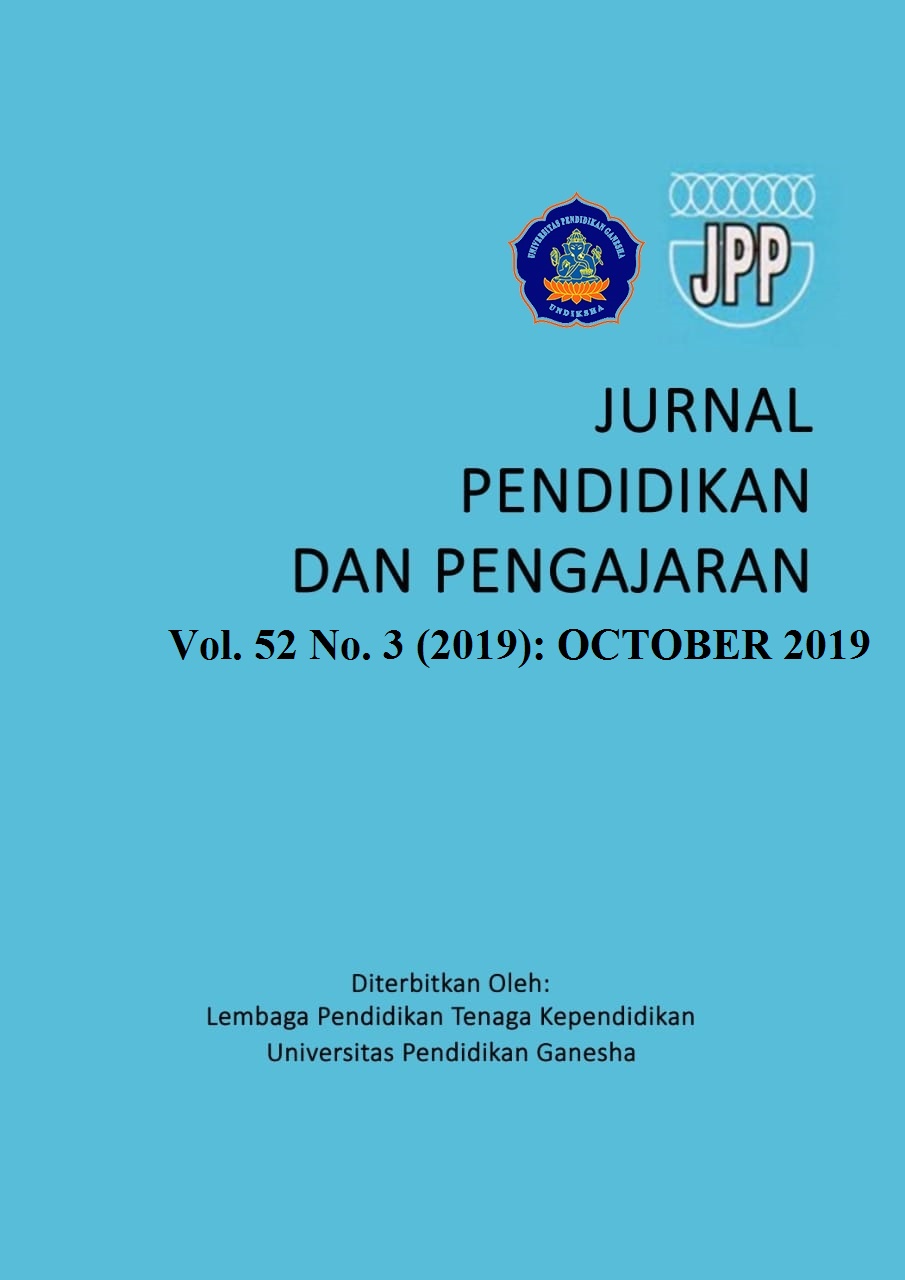The effect of "what's another way method" on creativity ability in problem solving
DOI:
https://doi.org/10.23887/jpp.v52i3.17121Keywords:
What’s Another Way, Creativity, Problem SolvingAbstract
Creativity is one of the necessary skills in problem solving. One method in problem problem is What other way. The study was conducted to find out information about other way about the ability and problems in the students in the field of Advanced Mathematics Education of integer material. The study involved 76 students from University in Yogyakarta. This research method is quasi experiment. Instrument of creativity problem solving of pre test and post test conducted in experiment class and control class. The results of that test include creativity in the problem that includes three indicators, fluency, flexibility, and novelty. Then, the data were analyzed by comparing the results of pre test and post test in the control and experimental class. Data analysis is also reinforced by gain score. The results of this study is being the response of students towards learning by using the "what's another way" is positive
References
LeBlanc, John F., Proudfit, Linda & Putt, Ian J. Teaching in Problem Solving in the Elementary School. Dalam Krulik, Stephen & Reys, Robert E. (Ed) Problem Solving in School Mathematics. Reston, Virginia: NCTM Yearbook, 1980.
Polya, G. How to Solve It. Second Edition. Princeton, New Jersey: Princeton University Press, 1973.
Orton, Anthony. Learning Mathematics. Issues, Theory and Classroom Practice. Second Edition. Printed and bound in Great Britain by Dotesios Ltd. Trowbrigde, Wilts, 1992.
Posamentier, A. S & Stepelman, J. Teaching secondary school mathematics. Ohio: Merril Publishing Company, 1990.
Krutetskii, V.A. The Psychology of Mathematical Abilities in School children. Chicago: The University of Chicago Press, 1976.
Gary L. Musser, William F. Burger & Blake E. Peterson. Mathematics for elementary teachers a contemporary approach. Danvers: John Wiley & Son, Inc, 2011.
Albert B. Bennet, Laurie J. Burton &L.Ted Nelson. Mathematics for Elementary Teachers a conceptual approach. New York: Mc.Graw-Hill, 2012.
Warli & Yuliana, E. Peningkatan kreativitas pemecahan masalah metode “what’s another way” pada materi bangun datar siswa kelas VII SMP. Jurnal Formatif 1(3): 208-222, 2011.
Krulik, Stephen, and Rudnick, Jesse A. Innovative Taks to Improve Critical and Creative Thinking Skills. Dalam Stiff, Lee V, Curcio, Frances R. Ceds. Developing Mathematical Reasoning in National Council of Theacher of Mathematics, 1999.
Ruseffendi, H. E. T. Dasar-dasar Penelitian Pendidikan & Bidang Non-Eksakta Lainnya. Bandung: Tarsito, 2005.
Tatag, Y. E. S., & Widhia, N. Meningkatkan Kemampuan Berpikir Kreatif Siswa melalui Pemecahan Masalah Tipe “What’s Another Way”. Yogya: Jurnal PGRI, 2009.
Slavin Robert E., Psikologi Pendidikan Teori dan Praktik. Jakarta : PT.Indeks, 2011.
Published
How to Cite
Issue
Section
License
Authors who publish with Jurnal Pendidikan dan Pengajaran agree to the following terms:- Authors retain copyright and grant the journal the right of first publication with the work simultaneously licensed under a Creative Commons Attribution License (CC BY-SA 4.0) that allows others to share the work with an acknowledgment of the work's authorship and initial publication in this journal
- Authors are able to enter into separate, additional contractual arrangements for the non-exclusive distribution of the journal's published version of the work (e.g., post it to an institutional repository or publish it in a book), with an acknowledgment of its initial publication in this journal.
- Authors are permitted and encouraged to post their work online (e.g., in institutional repositories or on their website) prior to and during the submission process, as it can lead to productive exchanges, as well as earlier and greater citation of published work. (See The Effect of Open Access)





